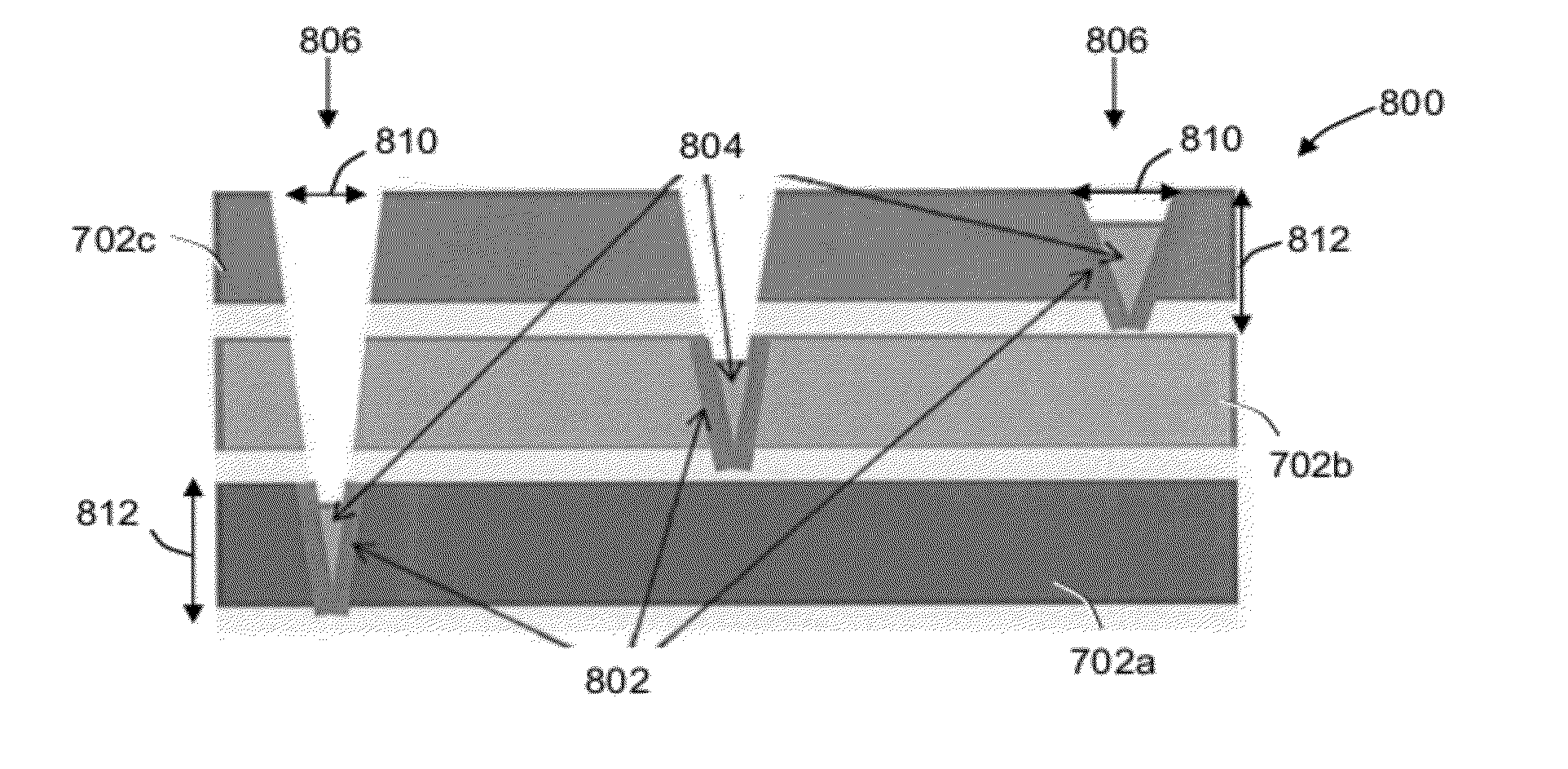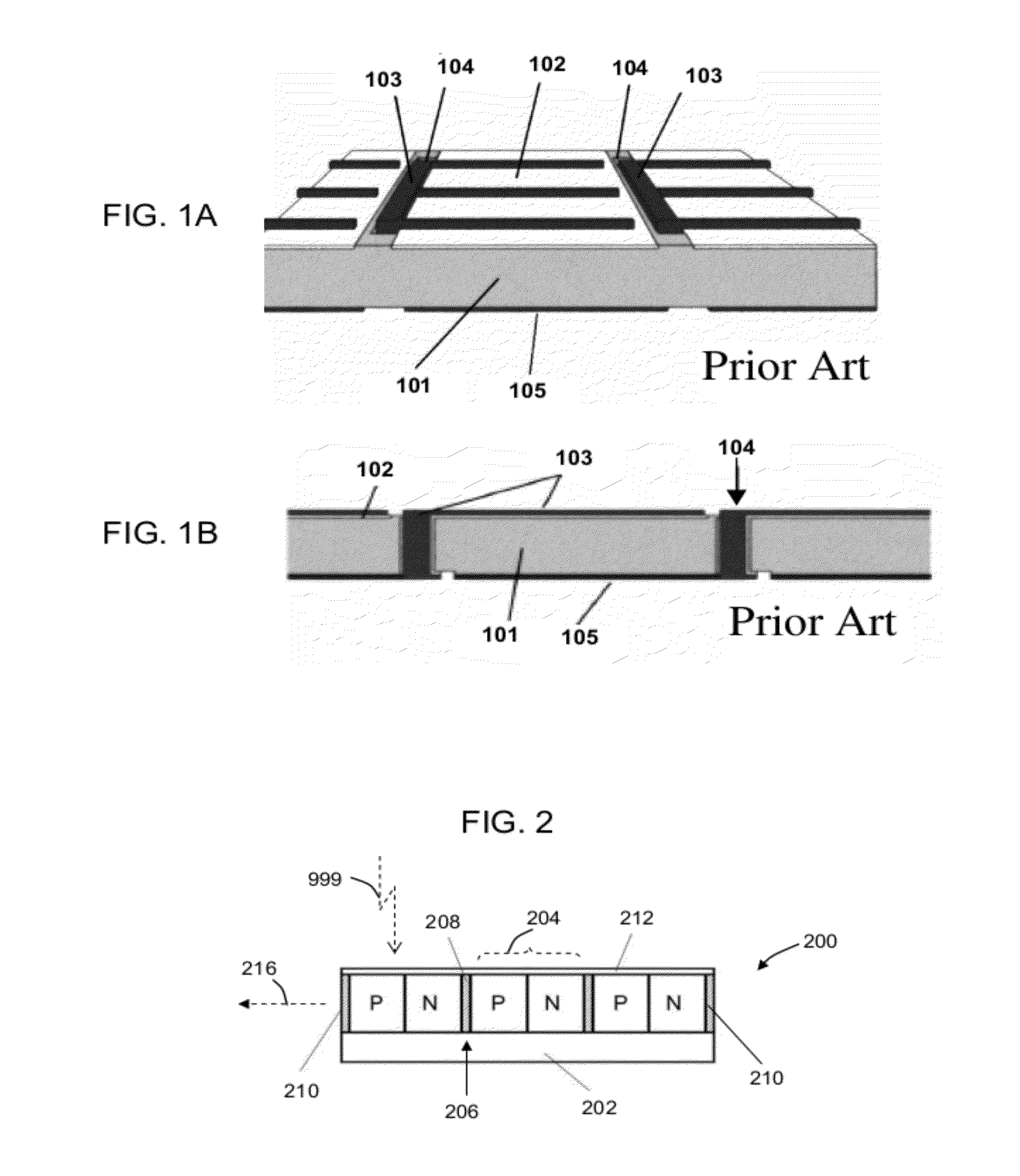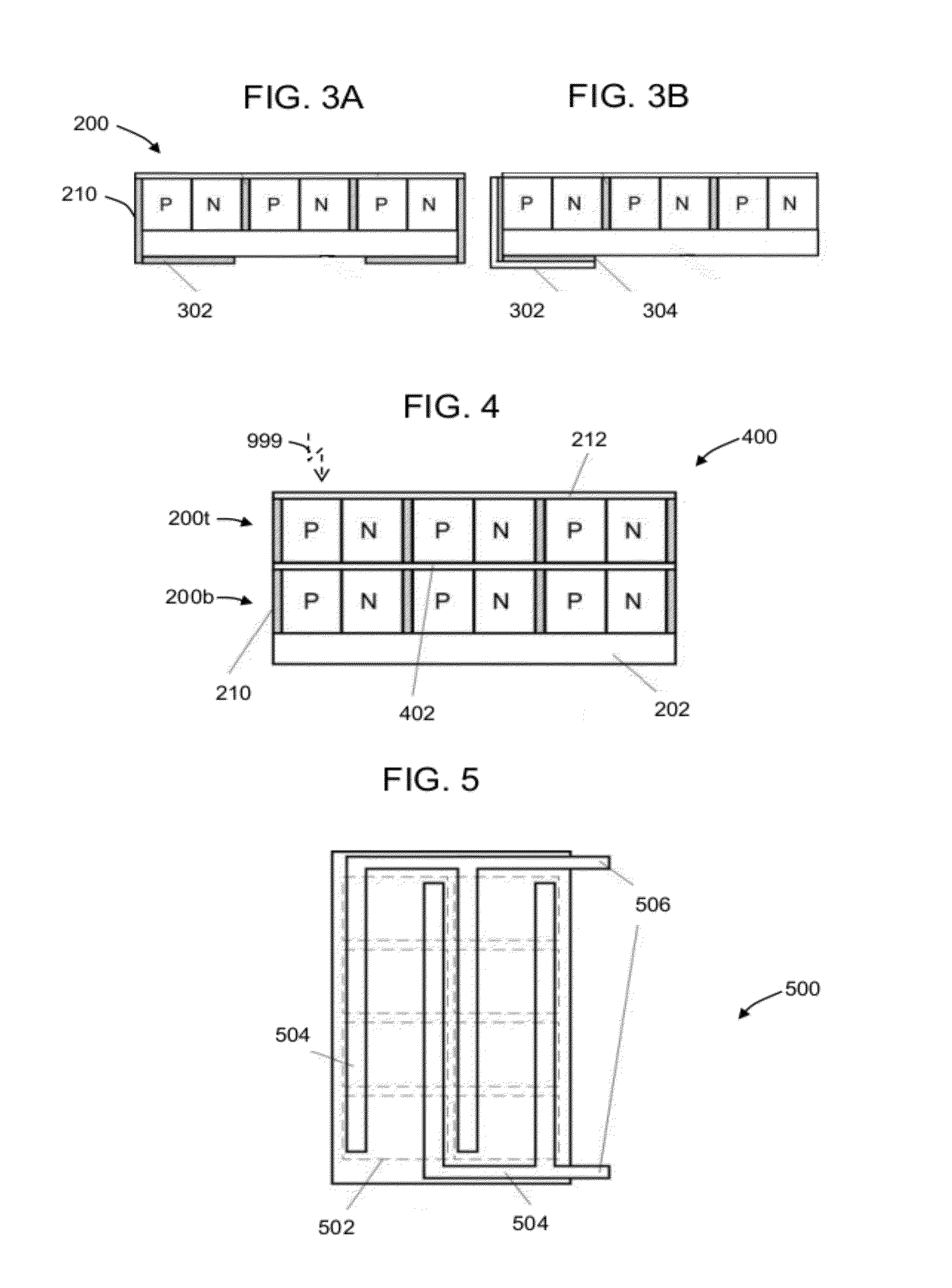Vertical junction pv cells
- Summary
- Abstract
- Description
- Claims
- Application Information
AI Technical Summary
Benefits of technology
Problems solved by technology
Method used
Image
Examples
Embodiment Construction
[0191]The present invention, in some embodiments thereof, relates to a photovoltaic cell design and, more particularly, but not exclusively, to a monolithic photovoltaic cell design.
[0192]As used herein, the term ‘monolithic’ implies, without limiting, that functional units such as semiconductor junction are formed in a single piece of material, optionally disregarding auxiliary components attached to the piece.
[0193]As used herein, the term ‘semi-monolithic’ implies, without limiting, attaching (e.g. bonding) two or more monolithic units to form a once-piece apparatus or part thereof, optionally disregarding auxiliary components attached to the units or apparatus.
[0194]As used herein, and unless otherwise specified, an intended (designed) radiation incidence angle (also referred to as ‘incident radiation’) is perpendicular to a cell's general surface intended for exposure to the radiation, without precluding or limiting inclined radiation when a cell is exposed to electromagnetic (...
PUM
 Login to View More
Login to View More Abstract
Description
Claims
Application Information
 Login to View More
Login to View More - R&D
- Intellectual Property
- Life Sciences
- Materials
- Tech Scout
- Unparalleled Data Quality
- Higher Quality Content
- 60% Fewer Hallucinations
Browse by: Latest US Patents, China's latest patents, Technical Efficacy Thesaurus, Application Domain, Technology Topic, Popular Technical Reports.
© 2025 PatSnap. All rights reserved.Legal|Privacy policy|Modern Slavery Act Transparency Statement|Sitemap|About US| Contact US: help@patsnap.com



